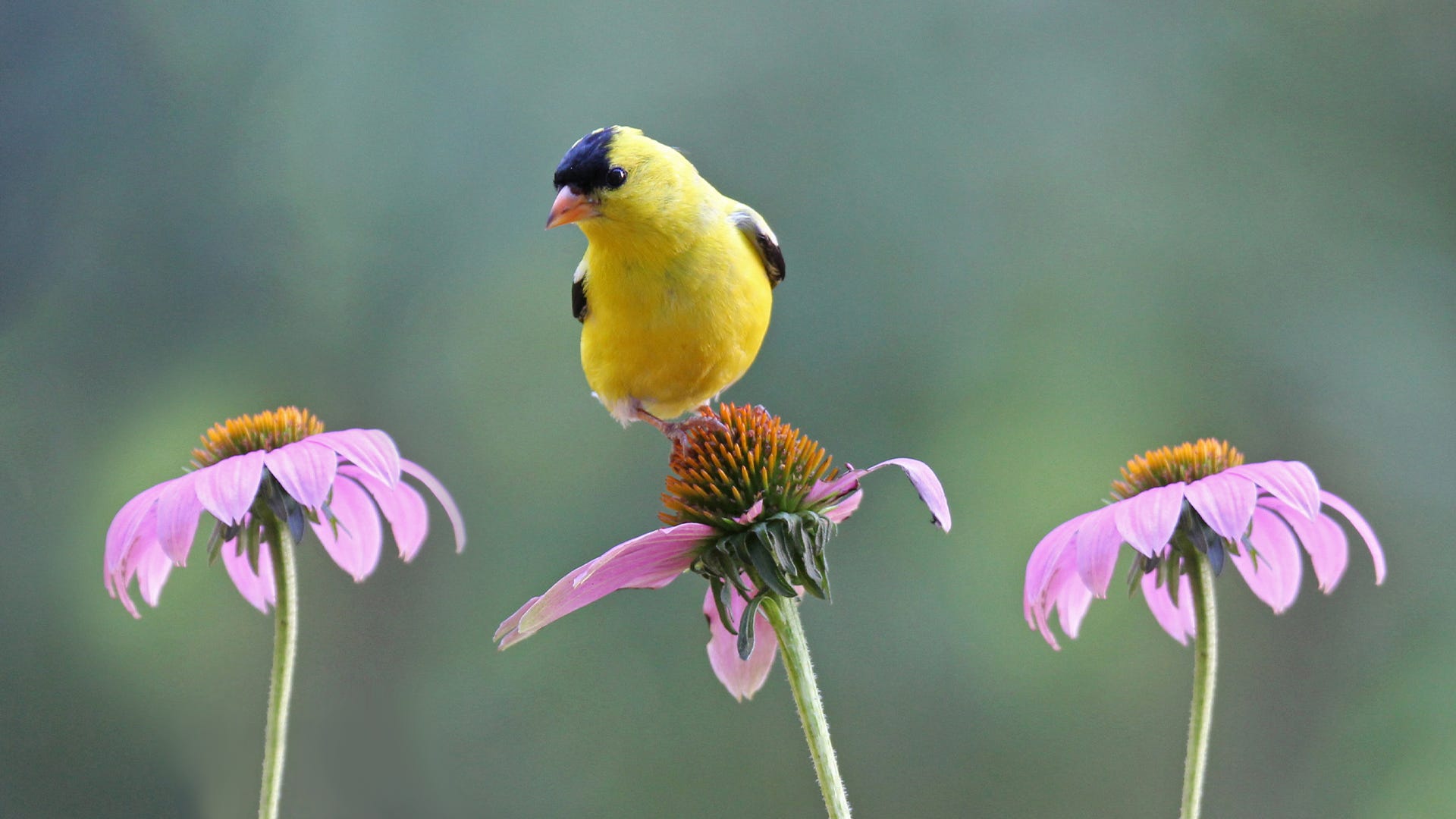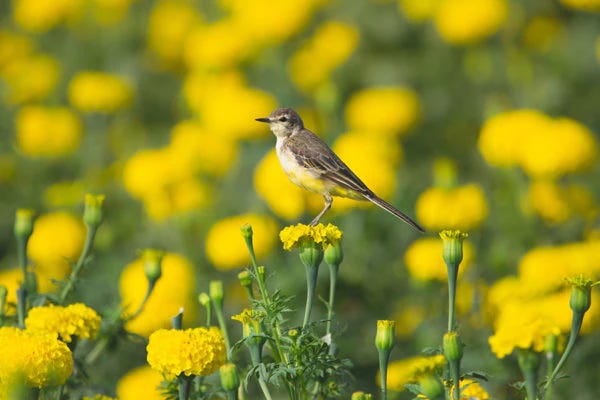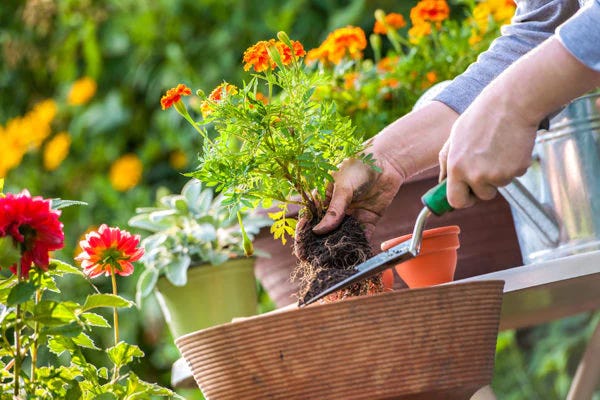
When birders think of planting a garden for birds, the first thing that comes to mind is a colorful flowerbed filled with nectar-rich blooms to attract hummingbirds. A birdseed garden, however, can be just as lovely in the landscape and will attract a wide range of bird species with the free food it provides.
Birds That Prefer Seeds
Any birds that readily come to seed feeders filled with sunflower seeds, millet, safflower, and Nyjer will also happily feed in a birdseed garden. Depending on the seeds the garden grows, sparrows, towhees, quail, juncos, finches, siskins, doves, buntings, turkeys, pheasants, cardinals, and other birds may all take advantage of the bounty.
Smaller birds may perch directly on sturdy blooms to nibble at flowers as seeds ripen. Larger birds on the ground may stretch up to pluck seeds from low-hanging flowers. Different species will also scratch through the dirt, leaves, and other debris on the ground to uncover fallen seeds.

Seed-Bearing Flowers for Birds
Many different flowers can ripen into delicious, nutritious seeds for birds. Sunflowers are the most common and popular option. Indeed, an entire birdseed garden can be planted with different heights, colors, and varieties of sunflowers (just check that they are all seed-producing, as some cultivars do not produce plentiful seeds). Adding more types of blooms to the garden, however, will attract even more birds and give the landscape more visual interest. Popular flowers that can produce copious seeds include:
- Allium
- Aster
- Black-eyed Susan
- Blanket flower
- Coneflower
- Cosmos
- Daisy
- Hibiscus
- Marigold
- Poppy
- Violet
- Zinnia
Several varieties of ornamental grasses, such as sea oats and switchgrass, can also produce seeds birds will enjoy. They can also add additional texture and movement to a birdseed garden.
When choosing which flowers to add to a bird-friendly landscape, consider your local climate, soil type, and the sunlight level the plants will receive. Choose native flower varieties that will thrive in those natural conditions. The flowers will be more vigorous, producing more blooms and more seeds with less intensive care.
See also: 6 Native Plants That Will Attract Hummingbirds to Your Regional Garden
Caring for a Birdseed Garden
Flowers in a birdseed garden must fully ripen for seeds to mature. That means these gardens tend to be a bit messier than more carefully cultivated decorative flowerbeds. You may want to do some minor deadheading throughout the season to encourage re-blooming and more overall seeds in the garden, but in general pruning ought to be minimized. Planting seed-bearing flowers slightly further apart will give the plants room to flourish. It will also encourage better air circulation between plants to minimize the risk of mold or pests. This extra space will be helpful for foraging birds to move around in the garden and access all the available seeds.
Chemicals should be avoided in the birdseed garden as much as possible. Artificial fertilizers, insecticides, and herbicides can all be toxic to birds. Instead, opt for organic choices as much as possible. Consider going chemical-free completely and letting birds provide natural pest control as they forage.
See also: Lawn Care With Birds in MindSimilarly, minimize the use of weed-barrier fabric /articles/lawn-care-with-birds-in-mindand inorganic mulches in birdseed gardens. As birds dig into the soil to access fallen seeds, they can easily tear up weed barriers and long threads can become dangerous tangle hazards. Inorganic mulches, such as rocks or rubber mulch, are also more difficult for birds to move and they will not be able to forage as effectively.
Grouping plants with similar care needs together in a birdseed garden will make them easier to tend. Consider sunlight levels, growth habits, and watering needs when planning a birdseed garden. You’ll easily be able to cultivate a productive plot with less work and maintenance required.
Growing your own birdseed doesn’t have to be a chore, and when you opt for seed-bearing flowers, you can add both beauty and practicality to your bird-friendly landscape.







